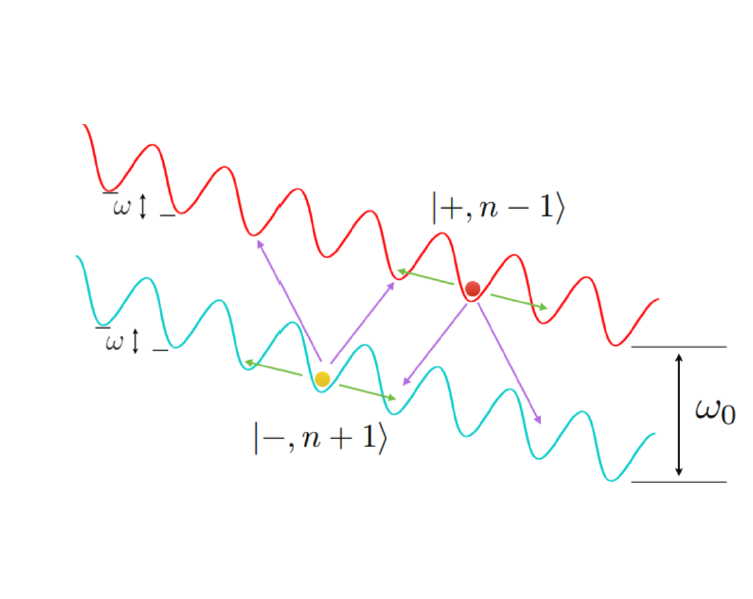
Z.-J. Shu, Yu Liu, Qingyun Cao, Pengcheng Yang, Shaoliang Zhang, Martin B. Plenio, Fedor Jelezko, and Jianming Cai
We experimentally observe Floquet Raman transitions in the weakly driven solid-state spin system of a nitrogen-vacancy center in diamond. The periodically driven spin system simulates a two-band Wannier-Stark ladder model and allows us to observe coherent spin state transfer arising from a Raman transition mediated by Floquet synthetic levels. It also leads to the prediction of an analog photon-assisted Floquet Raman transition and dynamical localization in a driven two-level quantum system. The demonstrated rich Floquet dynamics offers new capabilities to achieve effective Floquet coherent control of a quantum system with potential applications in various types of quantum technologies based on driven quantum dynamics. In particular, the Floquet Raman system may be used as a quantum simulator for the physics of periodically driven systems.
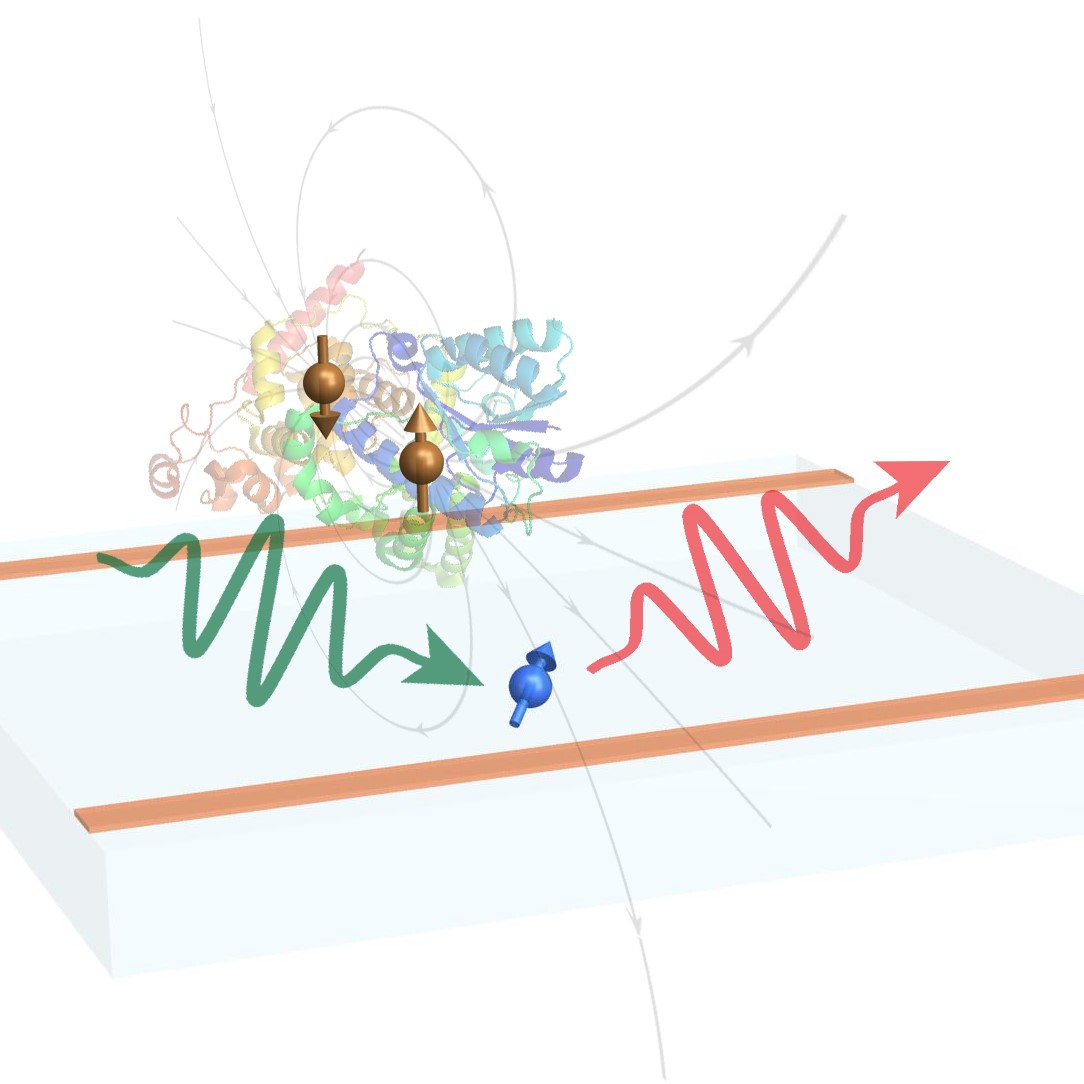
Haibin Liu, Martin B. Plenio, and Jianming Cai
We demonstrate theoretically that it is possible to detect the effect of the geomagnetic field on the radical pair reaction and propose the present scheme as a possible hybrid model chemical compass.
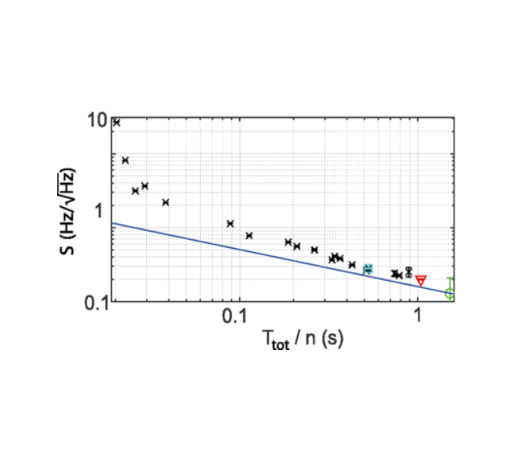
I. Baumgart, J.-M. Cai, A. Retzker, M. B. Plenio, and Ch. Wunderlich,
Precision sensing, and in particular high precision magnetometry, is a central goal of research into quantum technologies. For magnetometers, often trade-offs exist between sensitivity, spatial resolution, and frequency range. The precision, and thus the sensitivity of magnetometry, scales as 1 / √T 2 with the phase coherence time T 2 of the sensing system playing the role of a key determinant. Adapting a dynamical decoupling scheme that allows for extending T 2 by orders of magnitude and merging it with a magnetic sensing protocol, we achieve a measurement sensitivity even for high frequency fields close to the standard quantum limit. Using a single atomic ion as a sensor, we experimentally attain a sensitivity of 4.6 pT / √Hz for an alternating-current magnetic field near 14 MHz. Based on the principle demonstrated here, this unprecedented sensitivity combined with spatial resolution in the nanometer range and tunability from direct current to the gigahertz range could be used for magnetic imaging in as of yet inaccessible parameter regimes.
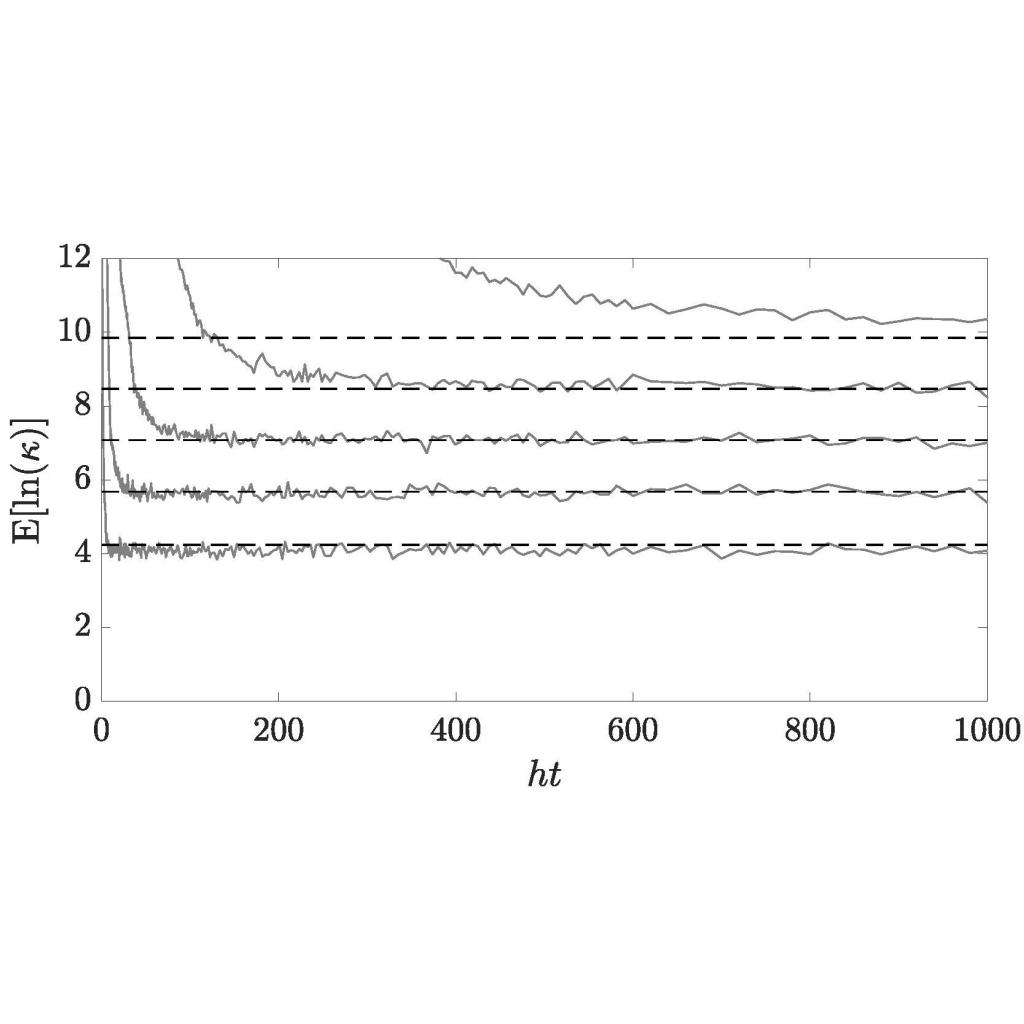
Jingcheng Wang, Shaoliang Zhang, Jianming Cai, Zhenyu Liao, Christian Arenz and Ralf Betzholz
In a recently demonstrated quantum-state tomography scheme [P. Yang, M. Yu, R. Betzholz, C. Arenz, and J. Cai, Phys. Rev. Lett. 124, 010405 (2020)], a random-control field is locally applied to a multipartite system to reconstruct the full quantum state of the system through single-observable measurements. Here, we analyze the robustness of such a tomography scheme against measurement errors. We characterize the sensitivity to measurement errors using the condition number of a linear system that fully describes the tomography process. Using results from random matrix theory we derive the scaling law of the logarithm of this condition number with respect to the system size when Haar-random evolutions are considered. While this expression is independent of how Haar randomness is created, we also perform numerical simulations to investigate the temporal behavior of the robustness for two specific quantum systems that are driven by a single random-control field. Interestingly, we find that before the mean value of the logarithm of the condition number as a function of the driving time asymptotically approaches the value predicted for a Haar-random evolution it reaches a plateau whose length increases with the system size.
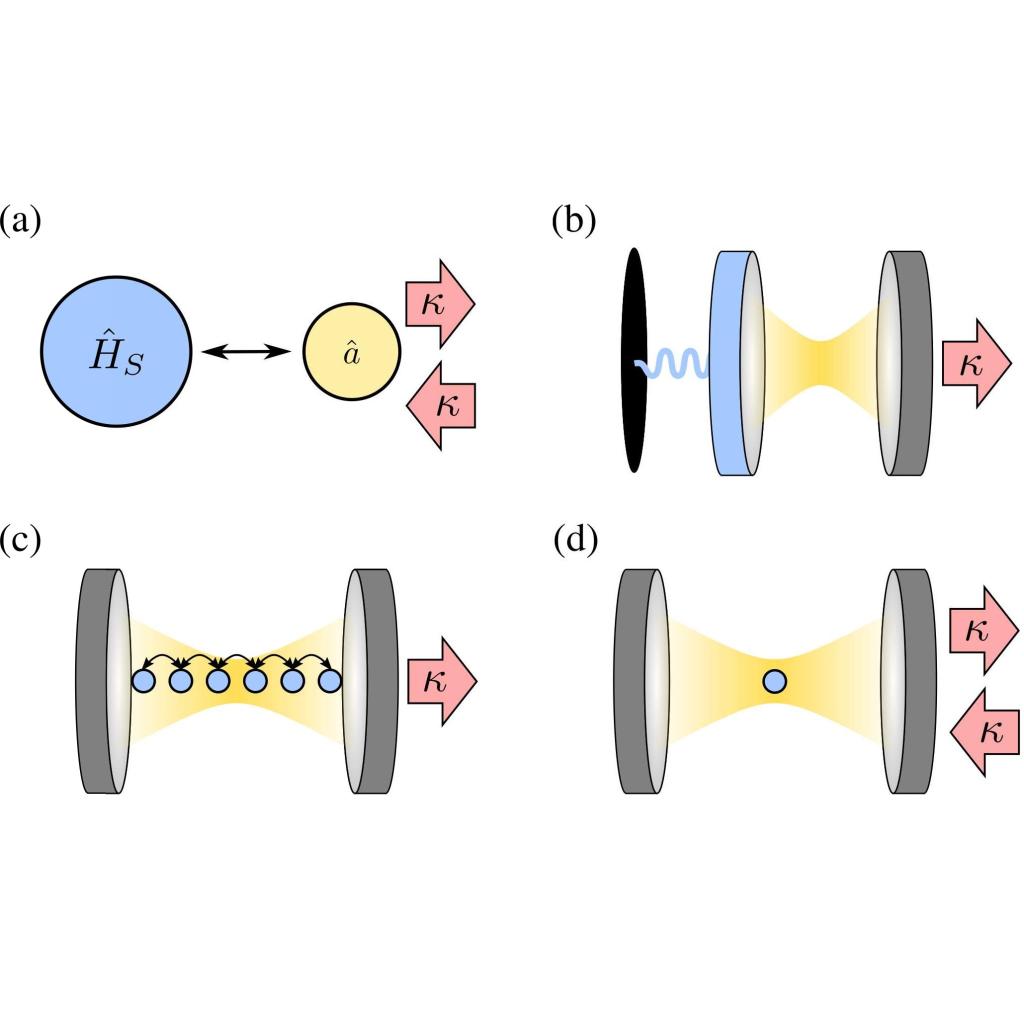
Simon B. Jäger and Ralf Betzholz
Recently, an effective Lindblad master equation for quantum systems whose dynamics are coupled to dissipative bosonic modes was introduced [Jäger et al., Phys. Rev. Lett. 129, 063601 (2022)]. In this approach, the bosonic modes are adiabatically eliminated, and one can effectively describe the dynamics of the quantum systems. Here, we demonstrate that this effective master equation can also be used to describe cooling in systems with light-matter interactions. We provide two examples: sideband cooling of an optomechanical oscillator in the unresolved as well as resolved sideband regime and cooling of an interacting quantum system, the transverse-field Ising model. We compare our effective description with a full numerical simulation of the composite formed by the quantum system plus bosonic mode and find excellent agreement. In addition, we present how the effective master equation can be extended to the case of nonvanishing mean thermal occupations of the bosonic mode. We use this approach to calculate modifications of the linewidth and frequency for a two-level system coupled to a dissipative thermal bosonic mode. Here, we highlight that our approach allows for a massive reduction of the underlying Liouville-space dimension.
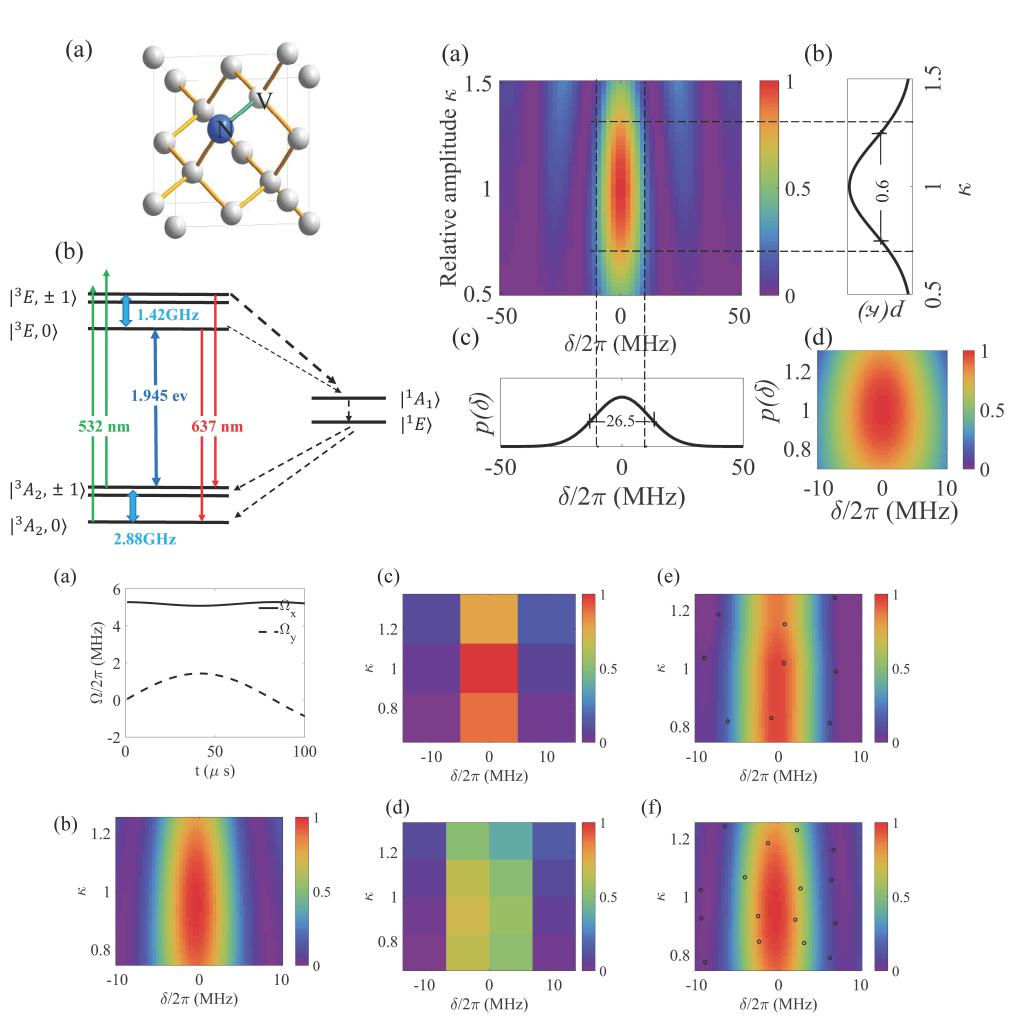
Jiazhao Tian, Ressa S. Said, Fedor Jelezko, Jianming Cai and Liantuan Xiao
NV centers are among the most promising platforms in the field of quantum sensing. Magnetometry based on NV centers, especially, has achieved concrete development in areas of biomedicine and medical diagnostics. Improving the sensitivity of NV center sensors under wide inhomogeneous broadening and fieldamplitude drift is a crucial issue of continuous concern that relies on the coherent control of NV centers with high average fidelity. Quantum optimal control (QOC) methods provide access to this target; nevertheless, the high time consumption of current methods due to the large number of needful sample points as well as the complexity of the parameter space has hindered their usability. In this paper, we propose the Bayesian estimation phase-modulated (B-PM) method to tackle this problem. In the case of the state transforming of an NV center ensemble, the B-PM method reduced the time consumption by more than 90% compared with the conventional standard Fourier basis (SFB) method while increasing the average fidelity from 0.894 to 0.905. In the AC magnetometry scenario, the optimized control pulse obtained with the B-PM method achieved an eight-fold extension of coherence time T2 compared with the rectangular π pulse. Similar application can be made in other sensing situations. As a general algorithm, the B-PM method can be further extended to the open- and closed-loop optimization of complex systems based on a variety of quantum platforms.
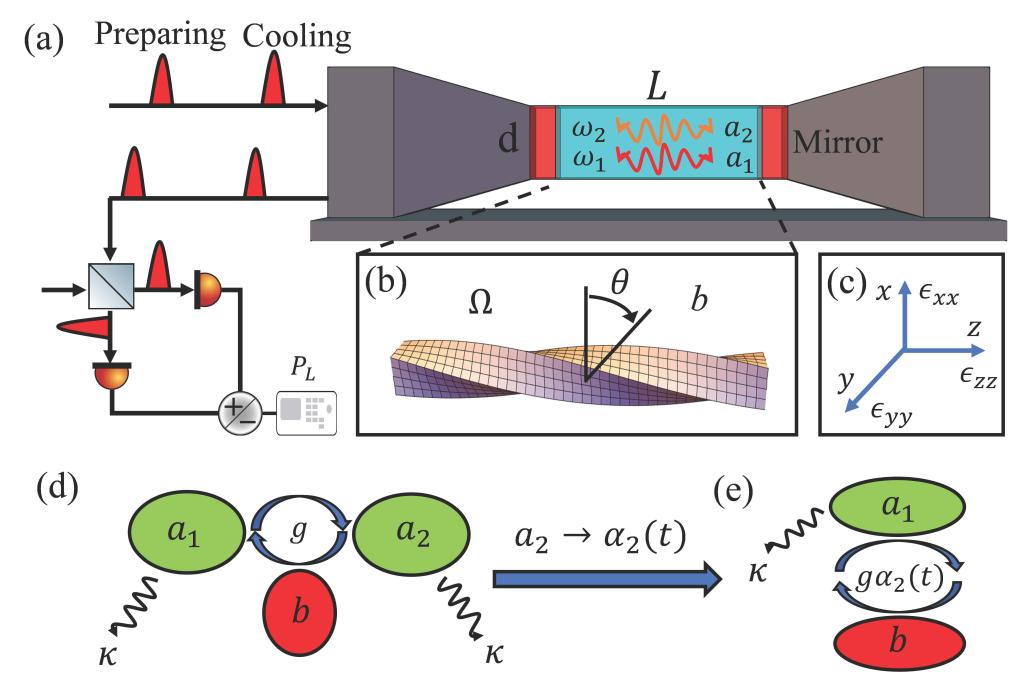
Yuan Liu, Yaoming Chu, Shaoliang Zhang, and Jianming Cai
Optomechanical systems offer unique opportunities to explore macroscopic quantum state and related fundamental problems in quantum mechanics. Here, we propose a quantum optomechanical system involving exchange interaction between spin angular momentum of light and a torsional oscillator. We demonstrate that this system allows coherent control of the torsional quantum state of a torsional oscillator on the single-photon level, which facilitates efficient cooling and squeezing of the torsional oscillator. Furthermore, the torsional oscillator with a macroscopic length scale can be prepared in Schrödinger catlike state. Our work provides a platform to verify the validity of quantum mechanics in macroscopic systems on the micrometer and even centimeter scale.
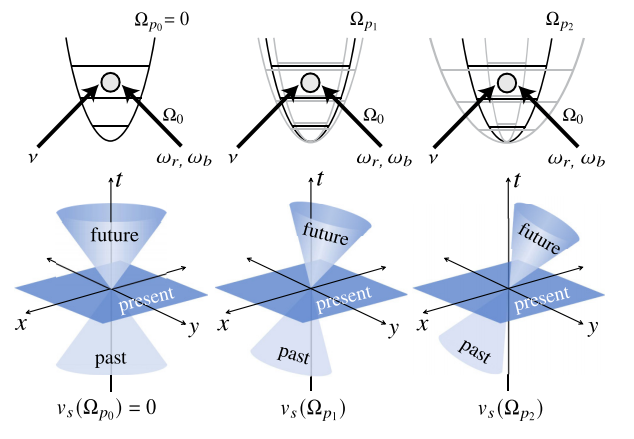
Qianqian Chen, Yaoming Chu, and Jianming Cai
Simulating quantum phenomena in extreme spacetimes in the laboratory represents a powerful approach to explore fundamental physics in the interplay of quantum mechanics, quantum field theory, and general relativity. Here we propose to simulate the movement of a Dirac particle propagating with a superluminal velocity caused by the emergent Alcubierre warp drive spacetime using trapped ions. We demonstrate that the platform allows for observing the tilted light cone that manifests as a superluminal velocity, which is in agreement with the prediction of general relativity. Furthermore, the Zitterbewegung effect arising from relativistic quantum mechanics persists with the superluminal propagation and is experimentally measurable. The present scheme can be extended to simulate the Dirac equation in other exotic curved spacetimes, thus providing a versatile tool to gain insights into the fundamental limit of these extreme spacetimes.
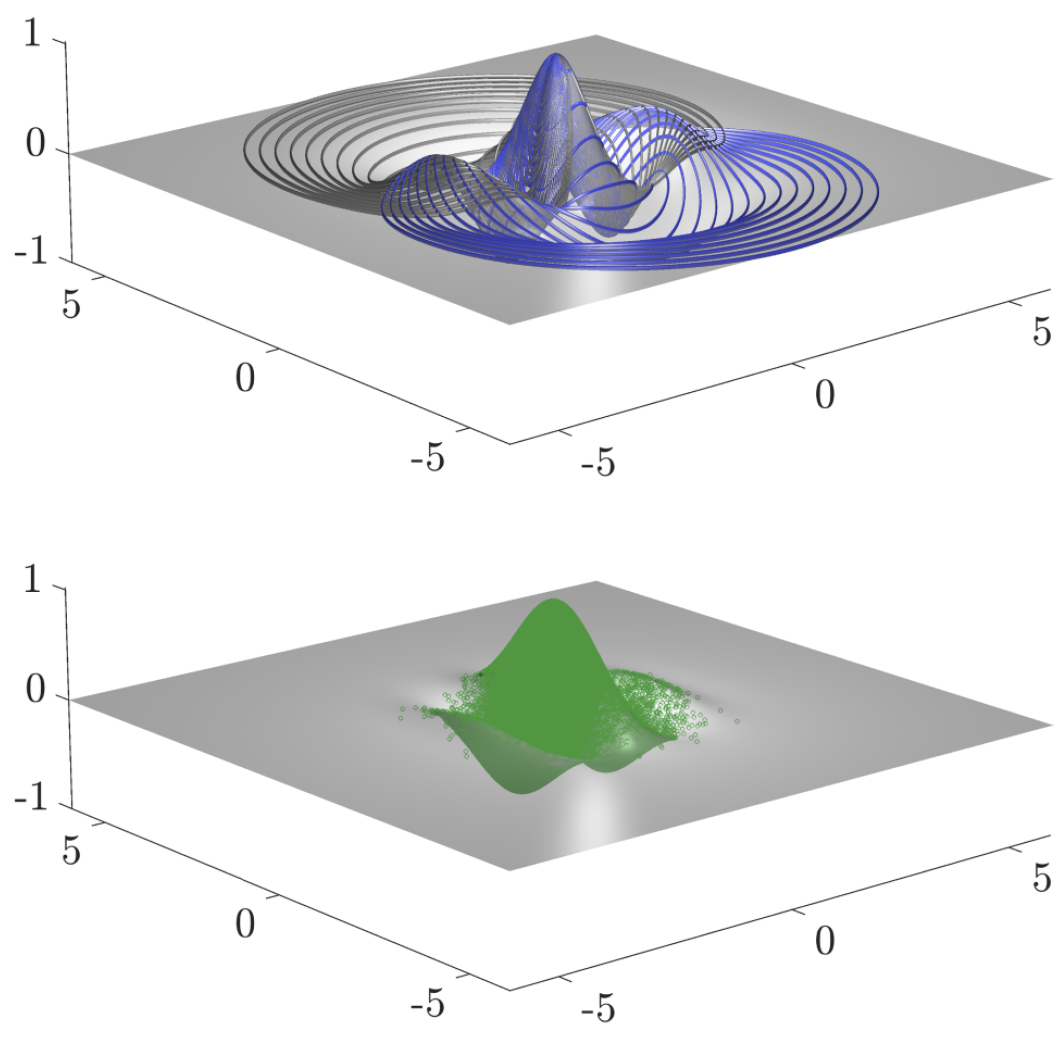
Ralf Betzholz, Yu Liu, and Jianming Cai
We present a method for the direct measurement of the Wigner characteristic function of a thermalizing harmonic oscillator that is completely inaccessible for control or measurement. The strategy employs a recently proposed probe-measurement-based scheme [Phys. Rev. Lett. 122, 110406 (2019)] which relies on the pulsed control of a two-level probe. We generalize this scheme to the case of a nonunitary time evolution of the target harmonic oscillator, describing its thermalization through contact to a finite-temperature environment, given in the form of a Lindblad master equation. This generalization is achieved using a superoperator formalism and yields analytical expressions for the direct measurement of the characteristic function, accounting for the decoherence during the measurement process.
版权所有 Copyright(C) 2018 华中科技大学量子传感与量子测量国际联合实验室